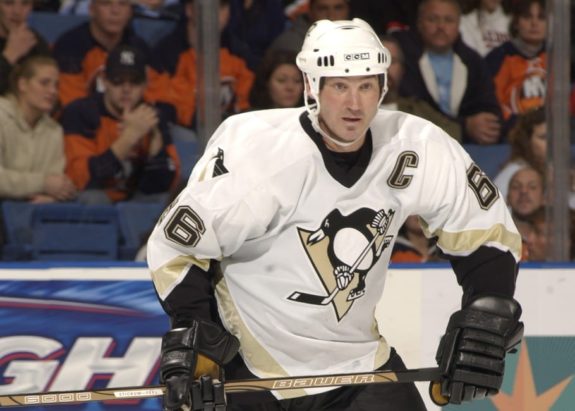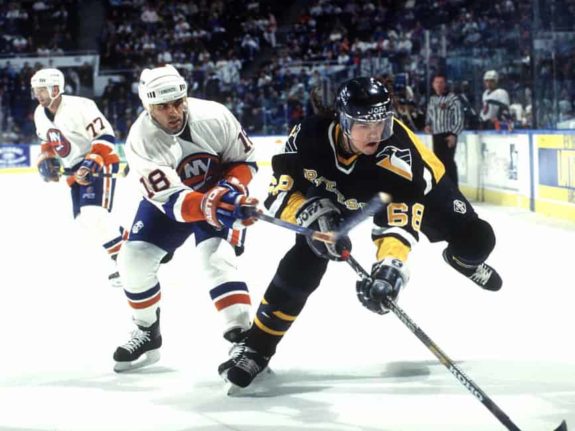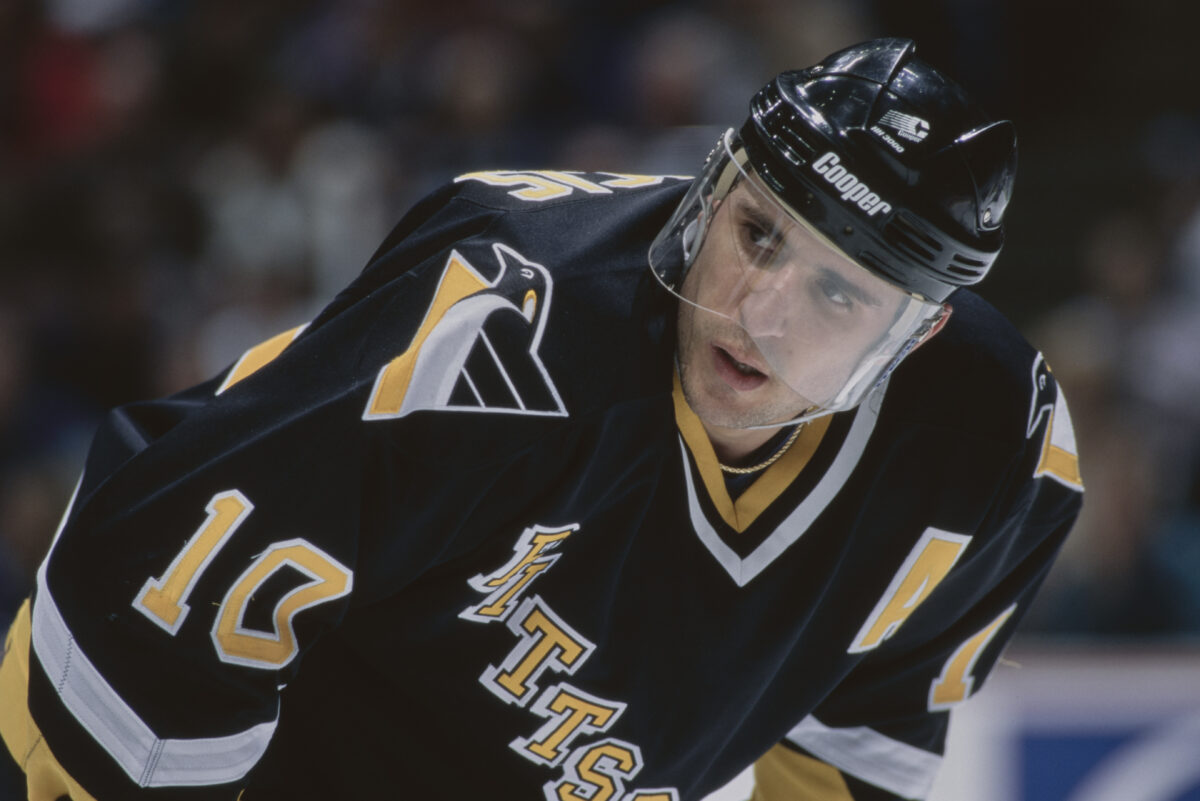Last season was a disappointment for the Pittsburgh Penguins and their fans, with the team missing the playoffs for the first time in 17 seasons. But in an effort to find a bright side to the 2022-23 season, it is worth pointing out that each of their top-six forwards managed to score at least 20 goals. It marked the first time a Penguins squad had done so since 1995-96. Looking ahead to 2023-24, that is at least one thing the team has going for it as it seeks to make the playoffs after last season’s absence.

But any similarities between the teams end there. It was a different time, the ’90s. Games could end in ties, there were no points awarded for an overtime loss, and the Penguins seemed to score at will. They scored 362 goals in 1996, 36 more than the second-best offense, and by far the most of any team in the last 27 years. They would roll through town, drop six or seven goals (or more) on a team, and then head to the next game. That’s just the way it was with that team.
A Look at the 1996 Penguins’ Offense
The assemblage of high-powered talent on the 1995-96 Penguins was impressive and the results, explosive. Mario Lemieux led the way with 69 goals, 92 assists, and 161 points, all NHL bests. He managed to score that in only 70 games, a pace of 189 points, something only he and Wayne Gretzky were capable of.
Related: Revisiting the Pittsburgh Penguins’ 2005-2006 Season
After Lemieux was his linemate, Jaromir Jagr, who set the standard all wingers are chasing to this day. In 82 games, he scored 62 goals, 87 assists, and 149 points. He and Lemieux joined Gretzky and Jari Kurri as the only linemates to combine for 300 points in a single season. And to think they could have scored even more if Lemieux hadn’t missed 12 games.

Rounding out their top three was Ron Francis, who finished fourth in NHL scoring with 119 points. Only Joe Sakic’s remarkable 120 points prevented the Penguins from securing the top three league scorers. Francis scored 27 goals and tied Lemieux with a league-leading 92 assists, in five fewer games played than Sakic.
The three headliners were among the best trios in league history, but the support acts weren’t exactly slouches themselves. First, was the mercurial Petr Nedved, who enjoyed a career year with 45 goals and 99 points in 80 games. If he had scored just one more point, the Penguins would have joined the 1971 Boston Bruins, the Edmonton Oilers of 1983, ’84, and ’86, and the Penguins from 1993 with four 100-point guys. Not to be forgotten was Tomas Sandstrom, who racked up 35 goals, 70 points in 58 games, a pace that was awfully close to 100 points over a full season.
If there was anyone forgotten, it was Bryan Smolinski, the last of the six. He chipped in 24 goals and 64 points of his own. In what would be his only season in Pittsburgh, he made the most of it. Let’s not overlook that they could have had a seventh player with 20 goals. Markus Naslund scored 19 in 66 games before he was traded to the Vancouver Canucks in a deal that later haunted the Penguins.
The remarkable forward scoring was bolstered by Sergei Zubov, who, like Smolinski, made the most of his one-season stop in Pittsburgh. The Russian defenseman collected 55 assists, 29 on the power play, and 66 points in only 64 games. That power play was deadly: they converted at a league-best 25.95 percent clip, with 109 goals scored on 420 chances. Lemieux led the way with 31 goals on the man advantage, with Jagr scoring 20 and Sandstrom adding 17 of his own.
Younger fans, feel free to look at this team in the same way as the current Oilers with Connor McDavid and Leon Draisaitl.
A Look at the Rest of the 1995-96 Penguins’ Season
Coincidentally, the similarities between the 1996 Penguins and the 2023 Oilers don’t end there. Both teams had three 100-point scorers, the league’s two best scorers, and four players with 35 or more goals. And they both fell to the team that would eventually represent their conference in the Stanley Cup Final.
With the Penguins, they enjoyed a regular season where they won 49 games, 102 points and won their division. As I said, there were no ties, no shootouts, and no points awarded for losses in overtime. Their record was good enough for second in the conference and to win the division by 11 points.

The first two rounds of the playoffs went mostly as expected for the Penguins. They dispatched both the Washington Capitals and the New York Rangers, but they found themselves without Francis in the Conference Final against the Florida Panthers.
In Francis’s absence, the Panthers pounced at the opportunity to eliminate a team that had beaten them convincingly in the regular season, three games to one. The Panthers were enjoying a Cinderella playoff run by clutching, grabbing, and trapping opponents, a strategy the New Jersey Devils employed to capture the Stanley Cup a year prior.
The strategy worked. Even though the Penguins had them outmanned and outgunned on paper, the Panthers defeated them in seven hard-fought games. Lemieux and Jagr were both held to a goal apiece, Sandstrom managed just two goals, and Nedved was the most productive Penguin with three goals to lead the way. The Panthers held that high-flying offense to just 15 goals in the Conference Final, virtually closing the book on that era of prodigious scoring. However, they would find themselves eliminated in the Final by the Colorado Avalanche.
That season ended anticlimactically for the Penguins, and a year later, the Dead Puck era officially began. Lemieux won another scoring title but retired, partially due to the shift to the slower, clutching game. But for 1995-96, Super Mario and the Penguins burned brightly with a year of offensive dominance fans are still waiting to see again.